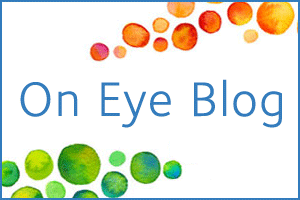
Usually, people between the ages of 40 and 45 will start to see the effects of presbyopia. As we wrote about in a previous post, presbyopia is a natural process that makes it difficult to read small print because the lens inside the eye becomes less flexible. This flexibility is what allows the eye to change focus from objects that are far to objects that are close.
Your eye doctor can suggest a variety of options to correct presbyopia. Some common options to correct presbyopia include:
- Reading Glasses: Patients can use these for reading, computer use, and other activities that require close vision.
- Bifocal, Trifocal or Progressive Glasses: These are worn for seeing at all distances. However, since the reading portion is in the lower part of the lenses, seeing up close in a straight ahead gaze is difficult. Since people typically use computers with the screen directly in front of them, this is not an ideal situation. Another issue is that the reading area and field of view of these eyeglasses is relatively small. This requires patients to move their head in order to see wider areas like a computer screen or newspaper.
- Monovision Contact Lenses: One way to wear contact lenses for presbyopia is to wear one lens for reading in one eye and one lens in the opposite eye for seeing in the distance (or just one lens in one eye for reading - if no distance prescription is necessary). This is called monovision. The problem with monovision is that you are only seeing with one eye at either distance or near and your vision in between them may be blurred. You also lose depth perception and the vision is never as clear as when both eyes are seeing at the same distance.
- Multifocal Contact Lenses: This is another option for people with presbyopia. Like progressive glasses, the vision is corrected for all distances. However with contact lenses, a person is always looking through the center of the lens. Both the distance and near corrections have to be in the center of the lens. This creates simultaneous vision where both near and distance images are created. It takes some time for patients to adjust because the brain has to learn to select the clearer image depending on what is being viewed. The advantage of multifocal contacts is that anywhere that you look, you are looking through the center of the lens. It is also a great option for patients who are active and want to look their best.
CooperVision offers a variety of multifocal contact lens choices. The latest offering is to ask your eye doctor about is a daily disposable multifocal contact lens called Proclear 1 day multifocal contact lenses. Make sure to ask your eye doctor about what option is best for you.





